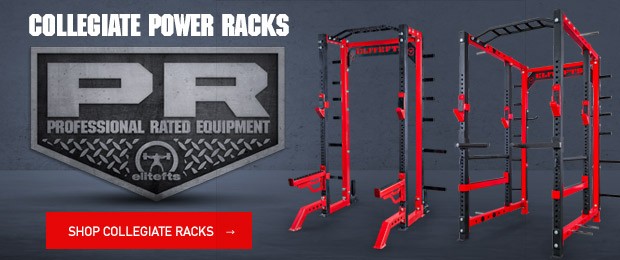
My first exposure to “Murph” was back in 2006 at a commercial gym. This was before there were many (if any) actual boxes carrying out the yearly Memorial Day tradition that is ubiquitous across the United States.
For those of you that don’t know, “Murph” is a Hero WOD consisting of:
For time with or without a weighted vest:
- 1 Mile Run
- 100 Pull-ups
- 200 Push-ups
- 300 Air Squats
- 1 Mile Run
This workout was a favorite of the late Lt. Michael Murphy who you probably remember from the movie “Lone Survivor” which in my opinion is an even BETTER book that I’ve read multiple times - I would highly recommend it if you’re looking for a new read.
I still remember my time was 52 minutes and I was pretty smoked for the next seven days thereafter (particularly my lats, triceps, and biceps.) This workout to me become a baseline measure of local endurance, but more from a mental perspective. As you can imagine, that last 1-mile run is where most people would “mail it in," and believe me, it’s very easy to do so. But this was something I would try to gamify and see how close I could keep my 1-mile splits (a 1-mile run fresh vs. a 1-mile run after a shit ton of pull-ups, push-ups, and squats is altogether a new test.)
As years past, many of us learned how to be more strategic with this workout and break the pull-ups, push-ups, squats into smaller sets such as:
20 Rounds of:
- 5 Pull-ups
- 10 Push-ups
- 15 Air Squats
This was a game-changer and something that helped bring my time down to the 30-minute mark.
Since I started writing programming for other gyms back in 2015, we’ve managed to keep “Murph” as a staple for Memorial Day even with our clients that are outside the states. Since we know when “Murph” is performed each year, it made it relatively easy to structure the programming in a way that our clients could:
- Perform it based on their individual gym schedule, i.e., done on either Saturday, Sunday, or Monday (Memorial Day).
- Keep their clients in the best possible position in terms of providing enough scaling options.
- Altering the programming leading up to the event, so people were fresh and ready to go and far less likely to sustain a nasty overuse injury.
Hero WOD Backstory
Hero WODs are a staple in the box community. The reason being, they are a test of mental fortitude that is designed to mimic, in essence, going through hell, or even worse, war.
How it’s framed, and how I frame it at my gym is, “Think about the pain and sacrifice our fallen heroes went through serving our great country. Use that as your motivation to keep pushing when you want to give up.” That simple logic is enough for people to crack some mental barriers and push themselves to a new level.
It’s also about being fortunate and grateful that we, as American’s, have the ability to give back and pay homage to those that have made the ultimate sacrifice for our great country. Even typing this right now, I’m feeling the motivation ramp up!
The energy at any gym is palpable, and the experience, even if you’re not a box athlete is pretty f’in awesome! Communities are forged and come together with the common goal of supporting our heroes and pushing themselves to a new level in honor of those heroes.
But with any brutal workouts comes a psychology component. Many gym owners’ clients experience this pain and start to think they have to train like this all the time to make gains. This is where understanding how the body responds to stress and building your clients’ foundation FIRST should always take precedence. Truth be told, this is where people experience improvements in their fitness that then lends itself to improving their “Murph” time.
With that said, if you’re throwing in hero workouts just so your clients can “feel the burn” or get their mental fix, then it may be time to re-educate your clients as to what is going to help get them closer to their goals and improve their resiliency.
Hero WOD Programming
From a programming standpoint, hero workouts are workouts that need to be planned for. And they are workouts that you’d need to structure entire weeks around so, in my opinion, these should not be a weekly occurrence. They are special workouts that should be a “treat” and not be programmed haphazardly.
Coronavirus Considerations
Since most of the world has had their doors closed for the last 12 weeks due to the Coronavirus pandemic, many gyms will be re-opening their doors right around the time “Murph” will take place. People are going to be very excited to start training again and try to “make up” for lost training time. Having “Murph” be one of your first exposures to training upon returning could be disastrous if we’re not coaching our clients and providing enough options to align with their new abilities.
The volume of this hero WOD is brutal even if you’ve been training consistently for the last 12-weeks. Instead of trying to go “all-in” being mindful of scaling, pacing, and NOT worrying about your past times is important. This is a great opportunity to focus on quality of movement, slow and methodical pace, scaling the volume as needed. Of course, these are tenets that should be in place at all times, although it’s even more important now and something that should be stressed. No one wants to return to your gym and get injured in their first week!
Some things to educate and counsel your clients on:
Throw old performances out the window: I’ve never been a fan of always comparing myself to my “former self,” and too many people compare themselves to who they once were. Things like, “When I was in my twenties,” or “Before I had kids...” There has never been a better time to turn over a new leaf and throw those thought patterns out the window.
Pacing: This workout (and almost every workout longer than 10 minutes) depends heavily on the aerobic system. Because of this, it’s important to know it’s about pacing and breaking sets early. This can literally make or break someone.
Understand the Adaptation Phase: At the beginning of ALL exercise or any time the work-load is increased, there is an adaptation phase that exists. What this means is that starting off too fast in a workout adaptation occurs too quickly where the body does not have time to adjust (relying mainly on anaerobic glycolysis). The result is people typically "redlining." Start slow, give your body time to adjust, and then adjust intensity progressively. This reality is applicable to ANY conditioning piece.
Intelligence over ego: Even if you’ve been training the last 12 weeks consistently, it may be wise to scale the pull-up volume, ESPECIALLY if you have NOT been performing kipping variations. The lack of exposure to this movement may put your clients at a higher risk of soft-tissue injury.
Be Grateful: Remember what this workout is about and celebrate your ability to have the freedom to take part in such an awesome event!
Murph Considerations
Here are the versions of Murph we provide to our clients. Since most people are just coming back to the gym since being quarantined, I’d gone a few steps further to ensure they stay safe. Keep in mind, people are still going to get a great, arduous workout comparable to the feel of the regular version.
Murph
For time:
1 Mile Run
100 Pull-ups
200 Push-ups
300 Air Squats
1 Mile Run
Rx+:(Wear a 20/10# Weighted Vest)
L2 Metcon
For time:
1 Mile Run
5 Rounds of:
10 Pull-ups
12 Push-ups
15 Air Squats
Then,
1 Mile Run
L1 Metcon
For time:
800m Run
5 Rounds of:
10 Ring Rows
10 Box Push-ups
15 Air Squats
Then,
800m Run
Post-Quarantine Murph
For time:
1 Mile Run
10 Rounds of:
5 Strict Pull-ups
10 Push-ups
15 Air Squats
1 Mile Run
Keep in mind, ALL of these versions can be scaled to match the individual. For instance, some folks may not have issues with the two miles of running, but they have issues with the body-weight movement volume. Present ALL the available options and then make scaling suggestions for the individual.
Closing
The tradition of Memorial Day Murph runs deep and is something all boxes look forward to each year. The important thing to remember is that hero workouts are special workouts that need to be planned for. Running hero workouts weekly is not a great idea from a programming standpoint if you care about your clients’ longevity. Performing hero workouts ‘once and a while’ helps these workouts maintain their meaning and, in essence, throws your clients a bone to get their beat-down fix. And if you’re building your clients bases through general strength and aerobic work, they’ll be able to see the fruits of their labor any time a hero workout is revisited.
Lastly, I hope all of you that are reading this were able to weather the Coronavirus storm. Being a gym owner is no small task without challenges like this. I know when I was a gym owner, 80+ hour weeks were typical, so I’m hoping many of you get some much-needed rest throughout this "break." Happy Memorial Day! #america











I'm also tentative about programming training around something like Murph. In many units I've been in, something like Murph would be a pretty standard morning PT session. Then you'd still have to go follow your actual lifting program in the afternoon!
Also, I don't think Mike Murphy would have done kipping pull-ups.